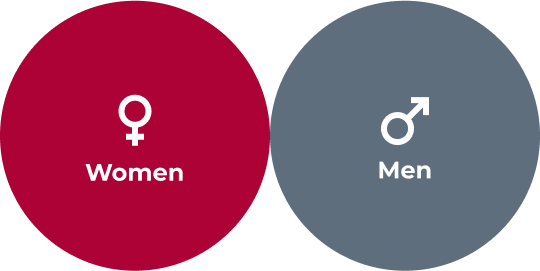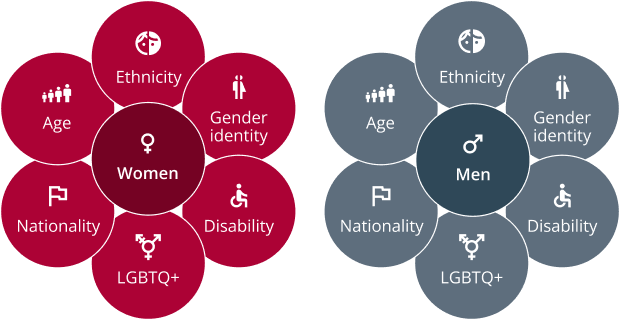

EDGE
Insights®
What is measured?
EDGE Insights® measures and analyzes four diversity, fairness, and inclusion related indicators.
Representation
Representation
Along the pipeline, across different types of jobs and different levels of responsibility.
Pay Equity
Pay Equity
Equal pay for equivalent work.
Effectiveness
Effectiveness
Ensuring equitable career flows when it comes to pay, recruitment and promotion, training, flexible working and organizational culture.
Inclusiveness
Inclusiveness
As reflected in employees’ experience in terms of career development opportunities.
Representation is a measure of diversity, Pay Equity is about equal pay for equivalent work,
Effectiveness is effective processes to ensure equitable career flows and Inclusiveness is about the culture and experience of working within the organization.
EDGE and EDGEplus
EDGE Insights looks at workplace diversity, fairness, and inclusion through the lens of both gender and intersectional equity. This is because it is important to acknowledge all components of an individual’s identity such as gender identity, LGBTQ+, ethnic background and origin, age, working with a disability status, and nationality.
It is also possible to look at gender alone for organizations where their HR systems are only set to manage a binary view of gender. In some instances, this can be the necessary first step of assessment and analysis as gender can be legally tracked in all geographies and industries.
EDGE (gender binary)
Looking at women and men as two homogeneous groups, our data-led approach illuminates the actual level of equity and how disparities might be addressed.

EDGEplus (intersectional equity)
EDGEplus uses a more detailed analysis of diversity, encompassing gender identity, LGBTQ+, ethnic background and origin, age, working with a disability status and nationality.

360 Degree Action Plan
By taking a holistic look at your organization, including statistical data, policies and practices, infrastructure and workplace experience, the resulting assessment of the gaps between an organization’s intention, experience, and impact in will result in a recommendation for an effective and targeted Action Plan.

